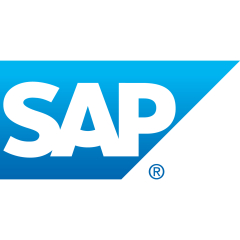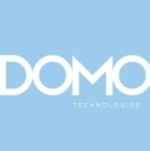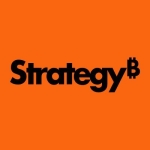
Consultant at a tech company with 10,001+ employees
Business Objects on Linux and SQL Server
This is just a quick post to share a lesson learned while I was on an engagement where the client’s reporting environment was using SAP Business Objects (BO)running on Linux for reporting. We were doing a test to move the underlying data warehouse from another database platform to SQL Server 2008 R2.
As we changed connections over, however, we quickly ran into a roadblock. It seems when we tried to make a connection to SQL Server via BO we got the error of ‘Unable to bind to Configuration Objects WIS 10901′. What made this situation strange is that from a Windows box you could connect but from Linux itself, it wasn’t having any of it. After some digging around we found we needed a third party ODBC driver to make this connection work.
Read full post: http://www.sqlchicken.com/2013/05/business-objects-on-linux-and-sql-server/
Disclosure: My company does not have a business relationship with this vendor other than being a customer.
Manager of Development at a tech services company with 51-200 employees
Seven thoughts about SAP BusinessObjects BI Analytics Editions

SAP BusinessObjects BI Analytics Editions provides to you the full spectrum of Analytics technologies and innovations which enables you to design, build and consume business friendly, agile, fast, quality and intelligent Analytics solutions for your business.
Complete – because it provides the full spectrum of powerful, unified and innovative Business Analytics technologies and solutions for all your Analytics needs.
Business friendly – because now your business can easily understand and learn how to prepare, build and consume Analytics.
Agile – because now you can unleash the full potential of your data and get the largest business benefits and value by harvesting agility with the deepest involvement of your business.
Intelligent – because now you can create the most intelligent Analytics that meets all your individual, departmental and Enterprise requirements.
Fast – because now you can design, implement and consume Analytics at the speed of rapidly changing business.
Quality – because now it is easier than ever to build trustworthy and reliable Analytics for your business.
Analytics for all – Analytics should and must be accessible for all and everyone. And now it is…
Disclosure: My company does not have a business relationship with this vendor other than being a customer.
Buyer's Guide
SAP BusinessObjects Business Intelligence Platform
October 2025
Learn what your peers think about SAP BusinessObjects Business Intelligence Platform. Get advice and tips from experienced pros sharing their opinions. Updated: October 2025.
872,869 professionals have used our research since 2012.
CEO with 51-200 employees
Business Objects - Big in Every Way
Yes, SAP Business Objects (BO) will address your BI needs – no doubt about it. But so will many other products – MicroStrategy, Oracle, IBM Cognos and so on come to mind. Now BO is big. It is big on capability, big on footprint, big on required skill-sets and tends to be big on cost (consultants love it). SAP groupies will undoubtedly want to use BO, others might want to reflect more carefully.
SAP BO comprises over twenty products that address everything from Microsoft Office integration through to data integration. It would be truly futile to provide details on these components, although it is worth pointing out that SAP Predictive Analysis uses the same visual front-end as the rest of the products – and this is a particularly useful feature as the boundaries between BI and data mining start to blur – as they inevitably will.
Criticism of BO usually revolves around complexity and cost. Some of the newer BI entrants (specifically QlikView and Spotfire) provide much more manageable BI environments at a fraction of the cost. But then again they are not quite so all-embracing. As always it’s a trade-off. If you really want a huge monolithic BI environment then be prepared to pay for it. If you don’t, then accept that some of the bells and whistles might be absent – although an extensible BI environment (again QlikView and Spotfire) should make up for this. The choice is yours.
Disclosure: My company does not have a business relationship with this vendor other than being a customer.
Nice review by the author Martin Butler, As every coin has two sides, the same way Business Objects has some positive and negative points. Agree with the author that it requires great skill set, great amount of time and of course huge budget to use Business Objects. Though there are some positive points of the BO like :
Reusability : Build or create once and use multiple times as the query you use is not hard coded.
Director of Data Analytics at a transportation company with 10,001+ employees
Struggled with Excelsius
At Amtrak we used BO. One of things we struggled with was Excelsius. It has a limitation- it expects you to aggregate your data before you can use it. Otherwise you'll have performance issues because it's not made to handle large volumes of data. To work around it we would have the aggregated Excelsius and drill downs would link back to a webi report to provide more detailed information. We were able to a provide a dashboard for our 9 board of directors, provided that we aggregated to a level that we weren't exceeding the limitations of Excelsius.
Disclosure: My company does not have a business relationship with this vendor other than being a customer.
VP of Data Analytics at a insurance company with 501-1,000 employees
Mixed response of success
Been using BO since 2010 - mixed response of success
High level points from our experience:
Ad-hoc reporting capabilities are hit and miss:
For lite needs such as simple quires, summary level, what happened last month- it's pretty good.
For transactional level data we see universes that spin up for 3-10 minutes and then time out.
Robustness of the universe doesn't allow us to do the types of detailed analysis that we would like to be able to perform.
Static reporting works really well. We have reports that are scheduled and reports that are distributed via email. We also have a self service que- works well, well tested, great for our customers
Dashboarding- we have leveraged the Excelisus product- we have 25 dashboards- includes simple graphs, more detailed analysis with limited drill through (can do drill throigh back in the BO report). What's really missing is the ability to do any clickthrough in the dashboard itself. It's parameter driven and a little clunky (unlike products such as Tableau). It doesn't give users (at least the way we implemented it) the flexibilty to interact with all the graphs around the dashboard
Overall: It's great if you have a static customer base that has standard expectations who knows what they want and need to perform, but if they're trying to do self guided analysis, it's not a robust enough environment
We're upgrading to 4.x and also moving from a unix platform to a linux one. We're looking to see some savings and performance improvement. We're also looking to take advantage of the new dashboarding capabilities in 4.
Disclosure: My company does not have a business relationship with this vendor other than being a customer.
VP Product at PeerSpot
Gartner's Magic Quadrant report says that SAP customers report software quality as an obstacle to wider deployment
In the February 2013 Magic Quadrant Report, Gartner says that SAP customers report software quality as an obstacle to wider deployment. Additionally, customers expressed dissatisfaction with SAP support.
Are you a Real User of SAP BO? Have you found this to be the case in your organization?
If you are a user or are evaluating SAP BO, add your comment below or write your own review. Share your opinion with our community!
Disclosure: My company does not have a business relationship with this vendor other than being a customer.
SAP Business objects is one of the great tool which helps in taking confident decisions by connecting people, information and businesses across business networks. Though it comes with the price which can be costly for small to medium sized organizations. Though it has various features and SAP BusinessObjects Explorer is one of them, which provides intuitive user interface to search and explore the business data.
Consultant at a tech consulting company with 51-200 employees
Considerations for Upgrading from Business Objects Enterprise 3.1 to 4.0
I recently performed an upgrade from SAP Business Objects 3.1 to the SAP BI Platform 4.0. In the process, I noted a few idiosyncrasies you should consider if you plan to upgrade your 3.1 environment. Not all of these items may pertain to everyone but you should at a minimum consider them when planning your upgrade. These three items include Connections, Excel and Life Cycle Management (LCM).
The first topic is Connections and only need addressed if you are using Universes in your current 3.1 environment. For those with only Crystal Reports in the environment that do not access Universes, this does not apply. Specifically, it addresses Custom Access Levels that you may currently have in the environment. In order for users to access Universes in 4.0 you need to ensure the following rights are granted within the Custom Access Level. Under the System category, you should see Connections and Relational Connections. Under these subheadings, ensure that Data Access is granted for both of these items. The migration will only enable rights to Connections, not Relational Connections. You will need to grant Data Access to the Relational Connections otherwise users will not be able to refresh Universes.
The second topic is Excel. If you current 3.1 environment includes reports that are scheduled with a format of Excel, consider the following. During the upgrade, these reports get transformed to use the new DLL’s in the 4.0 environment. The reason this may present an issue is that the 3.1 environment saves to an .xls format whereas the 4.0 environment will save to an .xlsx format by default. You will have to determine if the organization has Microsoft Office 2007 or above in to order to read these files. If not, then you should note all of these schedules and change to the prior Excel format, or ensure that all of the client machines have the ability to read and open .xlsx formats.
The final topic is relevant to almost everyone in the 4.0 environment, since LCM needs to be installed on the 4.0 environment. However, this specific ‘gotcha’ only occurs if you change the default port for LCM. The default port for LCM is 3690. In Support Pack 4 and above, Version Management is an item in the Central Management Console under Manage. If you changed ports and click on this item you will be prompted for a system, user name, a password and authentication mode. As part of the SAP Business Intelligence Platform installation using Windows, it installs a service called LCM_Repository which uses port 3690. The port number you enter during the installation of the Platform is only the port number that the platform looks for and not the port number in which the subversion tool gets installed by default. In order to change this port so that it can start the LCM_Repository server at the correct port number you need to use the regedit tool. Note that any time you edit the registry there are profound implications. Please only do so if you are sure you’ve exhausted other issues and know for a fact that this is your problem. Peform a search for the LCM_Repository service and you should see the command line as one of the registry items. Add the following item to the string in the registry key –listen-port PORT. Where PORT is the port number that you told the platform to look for during the installation.
These are but three specific items to keep in mind when upgrading your SAP Business Objects Enterprise platform. Ideally you will provide ample time and attention to planning your upgrade prior to diving it. It will make your journey to the newest version much smoother and reduce downtime and other negative impacts.
Disclosure: My company is partners with SAP Business Objects, Microsoft & QlikView
Disclosure: My company does not have a business relationship with this vendor other than being a customer.
Project Manager at a manufacturing company with 501-1,000 employees
We extensively use the publication features of Crystal Reports and scheduling features of Web Intelligence. But we had some challenges with upgrades.
Valuable Features:
Business Object is truly a scalable and complete business intelligence solution for larger organizations. We have made use of the following components: Live Office, Xcelsius, Crystal Reports, Web Intelligence. We extensively use the publication features of Crystal Reports and scheduling features of Web Intelligence. For an organization that uses Excel extensively, the Live Office direct connect is fast, accurate and user friendly. Be sure to have some super users in the business who can develop Crystal Reports and well as Web Intelligence ad hoc queries. This will make the life of the IT developers and administrative employees much easier. Overall, with past experiences, I would have to rate our opinion of BOBJ very highly.
Room for Improvement:
On the downside, we have had some challenges with upgrades. Be sure to fully test every aspect in your development environment before applying any patches or service packs to Business Objects production servers. SAP was quick to respond to issues, but this still caused problems for users. The bugs we found were deep into software features (displaying column headings, formula logic, etc) and weren’t something we found in our extensive testing. I do admit we pushed the limits and had a lot of custom coding, but we expected these features to work and not break in future releases.
Disclosure: My company does not have a business relationship with this vendor other than being a customer.
Hi Tina,
Please use Internet Explorer as the default browser for Business Objects, other browsers doesnt support all features
Yes, BO Explorer leverages the complete underlying BO deployment and it has extensive and comprehensive data exploration capabilities
Services not starting due to missing jar files, in this case redeploy the war files and check. Detailed description of error would help to provide more info
Buyer's Guide
Download our free SAP BusinessObjects Business Intelligence Platform Report and get advice and tips from experienced pros
sharing their opinions.
Updated: October 2025
Product Categories
BI (Business Intelligence) ToolsPopular Comparisons
Microsoft Power BI
Tableau Enterprise
SAP Analytics Cloud
Oracle Analytics Cloud
Salesforce Einstein Analytics
AtScale Adaptive Analytics (A3)
Entrinsik Informer
Buyer's Guide
Download our free SAP BusinessObjects Business Intelligence Platform Report and get advice and tips from experienced pros
sharing their opinions.
Quick Links
Learn More: Questions:
- BI Reports for business users - which BI solutions should we choose?
- Tableau vs. Business Objects - Which is a better solution for visualization and analysis?
- I'm comparing SAS VA vs. SAP BOBJ -- main differentiating factor?
- What are the differences between Tableau and SAP Business Objects?
- What are some of the reporting tools in WebFOCUS vs. Business Objects?
- Which components of Business Objects do you use most?
- Is SAP BI suitable for a manufacturing company?
- When evaluating Business Intelligence Tools, what aspect do you think is the most important to look for?
- BI Tool Replacements, What Do You Recommend?
- Which one is best for ETL - Pentaho or Jaspersoft?
















Thank you for the brief yet critical information about SAP Business Objects. Generally, a good program is one that is easy to use and achieves the purpose for which it was developed. Business Objects qualifies as such for its attributes mentioned above by this author. In addition to providing quality analytic results, the analysis process is easy and thus fast. The tool is designed for use by any kind of business that needs data analysis; all that is required is a person with skills and knowledge in utilizing the program. Moreover, every business can use the tool for their specific analysis needs.